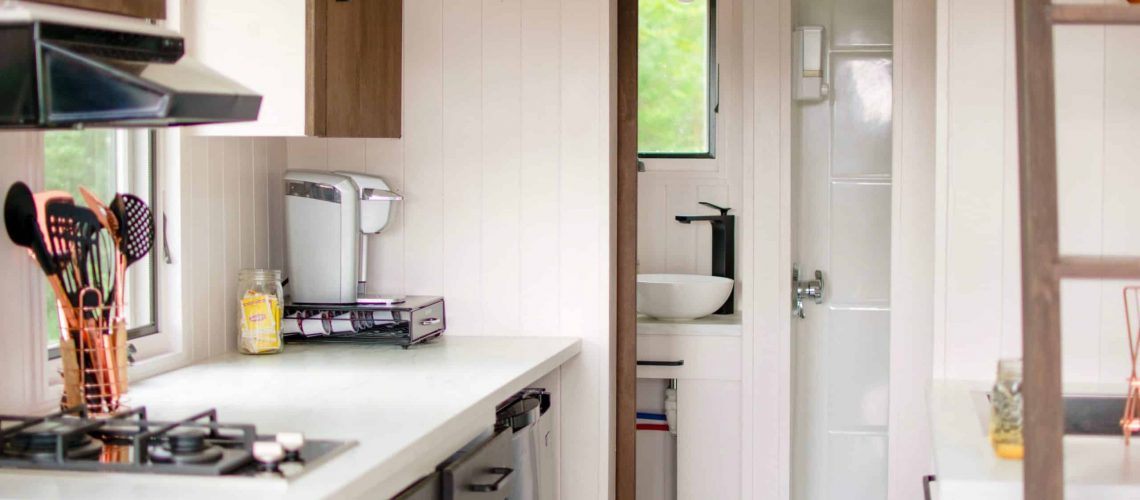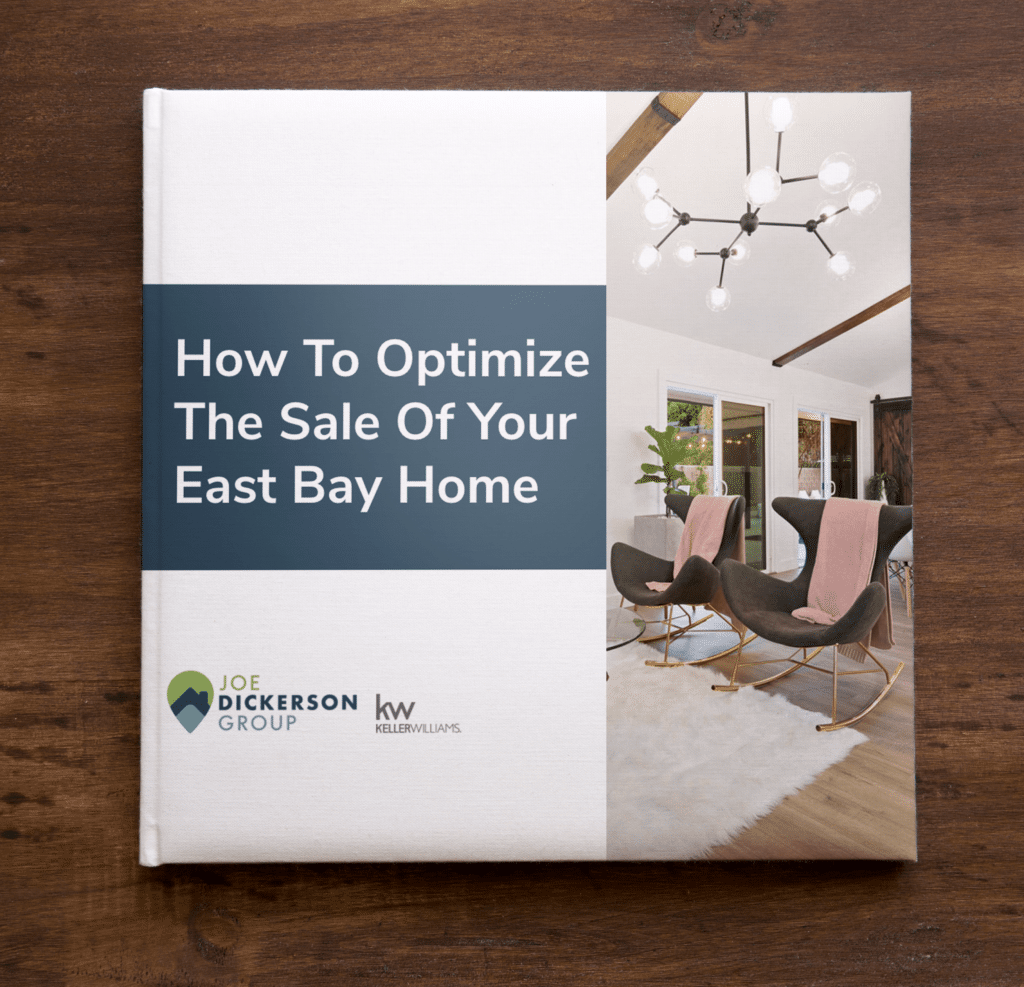In a world where bigger is often better, an interesting phenomenon has emerged: the tiny house movement.
Over the past several decades, the trend has been toward bigger houses on bigger lots. While the average home size in 1950 was under 1,000 square feet, that figure has now surpassed 2,600 square feet. That’s huge! We would need walkie-talkies to communicate with each other.
Okay, maybe not, but walkie-talkies are just fun.
Anyway, back to tiny houses. This growing fascination with tiny houses and tiny living has emerged from the interest in living simpler and more efficient lives.
Source: Tiny House Listings
Though Bay Area housing tends to be on the smaller side, tiny houses are VERY small. Even…dare I say it, tiny? 😉 The typical tiny house is between 100 and 400 square feet (yikes, no walkie talkies needed here!) and come in all shapes, sizes, and forms.
If the thought of living in a 400-square-foot dwelling with your giant bags of winter clothes, old tchotchkes you just can’t bear to part with, loud kids with perpetually sticky fingers, and dander-producing pets scares the heck out of you, it’s okay. Don’t run away yet.
Because even if you might not want to live in a tiny house yourself, there just might be some ways to leverage a tiny house in Oakland as a real estate investment, in-law suite, guest cottage, office space, home gym, or anything else you may need to expand your living space and give you more options and flexibility.
Source: Tiny House Listings
What Exactly IS A Tiny House?
Let’s start with the basics. First, there are two types of tiny houses:
1. A tiny house on wheels, legally considered a recreational vehicle (RV)
2. A tiny house on a foundation, legally considered an accessory dwelling unit (ADU)
For a tiny home on wheels, you register it as an RV with the DMV, then park it on your property. (As a bonus, because it’s on wheels, you can take it on vacation too! But that’s a dream for another blog post.)
For a tiny house on a foundation, there are typically more regulations around it, particularly around building codes and zoning.
That being said, California is perhaps one of the best states for tiny house enthusiasts. Though the regulations are still strict in certain areas, there’s definite movement and interest in the tiny house space.
On top of that, there’s also significant innovation in the design and building of tiny houses. Many are quite creative in their use of space and include features like skylights, loft beds, and even gourmet kitchens. Many tiny houses are also energy efficient, with a few designs even totally off the grid, adding to the interest in tiny living.
Tiny houses are also significantly more cost-effective than a traditional home. Typical costs to build a tiny house range from $10,000 to $40,000, so the majority of tiny house owners are able to live mortgage-free.
Before we jump into how to leverage a tiny house as a real estate investment, for multigenerational living, or for anything else you may need to enhance your living situation, start by checking out some current listings for tiny houses or these incredibly chic tiny houses in the East Bay to get a better sense of price ranges and features. YouTube is also great for tours of some amazing tiny houses like these:
Where Can I Put A Tiny House?
To leverage a tiny house as a real estate investment, in-law suite, or home office, you first have to understand what’s possible, and what’s allowed.
Alameda County, among others in the area, allows tiny houses on wheels as “caregiver dwellings” in the backyard of a person who needs assistance. So, you could potentially have a nanny live in a tiny house in your backyard.
What’s more, Oakland is currently working on a proposal that would provide more flexibility for RVs and mobile homes. Under the proposal, two or more RVs or mobile homes would be allowed on a property so long as they connect to city utilities such as sewer and electricity. A single RV on a property could use off-grid alternatives, such as solar and wind power, as long as there is access to a bathroom on the property for tenants.
Fresno is a step ahead of the rest. It was the first city in the country to write authorization for tiny houses into its development code. In Fresno, you can park a tiny house on wheels in your backyard as a permanent secondary dwelling unit, either for the owner or to rent out.
Now THAT is pretty cool. That means that you don’t need to buy a multifamily property to produce rental income from your house. You could potentially buy a single-family home with a decently sized lot, then build or park a tiny house in your backyard, netting you some extra rental income. That’s perhaps the best way to leverage a tiny house as a real estate investment.
Source: Tiny House Listings
More About How To Leverage A Tiny House
There are many ways that you could leverage a tiny house as a primary home, real estate investment, in-law suite, home office, and more. In some scenarios, you might rent out the tiny house. In other scenarios, you might live in the tiny house yourself. Here are some ideas on how to leverage a tiny house to enhance your living space and/or provide extra income:
1. As a long-term rental
One way to generate extra income via a tiny home is to rent it out and find a long-term renter. You can then live in the main house and rent out the tiny house, using the rental income to help defray your mortgage costs.
2. As a short-term rental
I’m sure you’ve seen how many cool and unique places pop up on Airbnb every day, including this tiny home in Oakland. Your tiny house could be next! People love trying out unique living spaces, especially when on vacation.
3. As YOUR home
If you’re feeling adventurous, or if you’re interested in tiny living yourself, you can even live in the tiny house, which would cost you a fraction of your mortgage.
Then, you could rent out the main house, and I’m willing to bet you would be cash flow positive. That is, the rental income would be able to cover your mortgage, and then some, so you could potentially be living for FREE, while someone else is paying off your house. Sounds like a dream come true, right?
4. As an apartment to-go
If you don’t want to share your backyard with a tiny house and a tiny renter, you might consider buying a tiny house on wheels and renting it out to a tenant to care for on their own property or in an RV park.
5. As a backyard office
If you work from home, this could be a great way to leverage a tiny house. Though you won’t get rental income from a backyard office, that space would be a tax write-off, which could be significant.
6. As an in-law or guest suite
With home prices skyrocketing in Oakland and the East Bay, a primary home with an extra room for guests or extra area for in-laws might not be within your price range.
However, if you’re able to add a tiny home to the property, you can add on to the useable living space without breaking the bank.
Source: Tiny House Listings
What About Tiny House Regulations And Laws?
In the ideal world, we’d all be able to put a tiny house in our backyards today, or even build tiny house villages where we can all share communal space and live simple lives while simultaneously helping to alleviate the Bay Area housing shortage.
Currently, many regulations in Oakland are still fuzzy in regard to tiny houses. However, based on our understanding (and we’re not lawyers, so take our recommendations with a grain of salt), there are a couple of things you can do legally today to leverage a tiny house as a real estate investment:
1. Park a tiny house on wheels on your property and use it as a caregiver dwelling.
2. Build a tiny house on a foundation that’s detached and not part of the main house, 4 feet or more from the property line. This tiny house may not exceed 800 square feet or 75 percent of the size of the main house, whichever is less.
The good news is that Oakland seems to be moving in the right direction. The city of Oakland recently invested in tiny house prototypes in partnership with Laney College.
We’re still learning about the regulations and possibilities ourselves, so if you’re interested, don’t hesitate to reach out! We’d love to chat about tiny houses, real estate investing, and your unique situation and goals.
In the meantime, we’ll leave you with this awesome documentary about the legalities of living tiny, definitely worth checking out:



